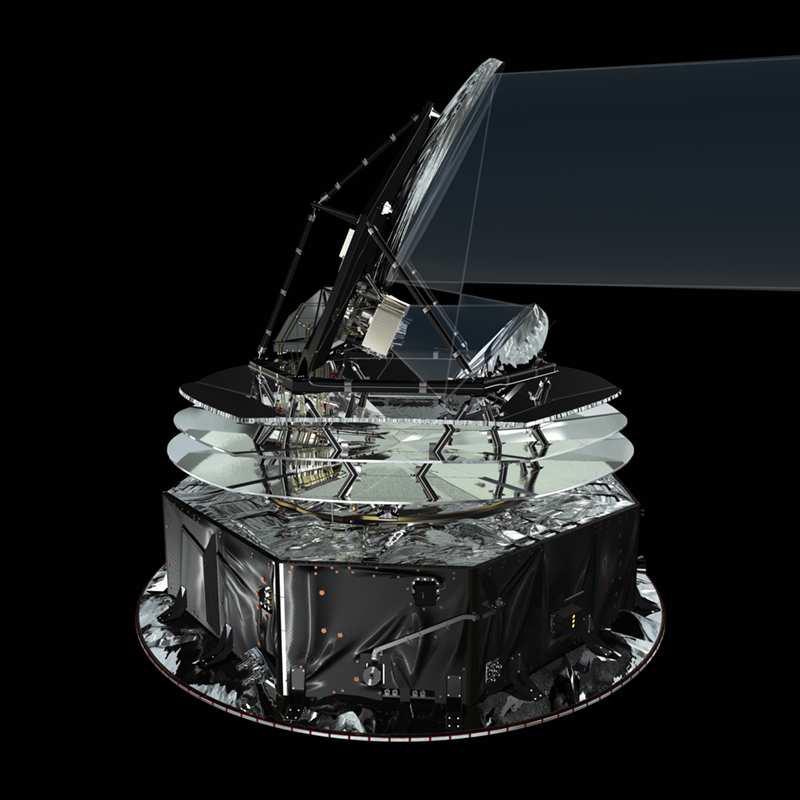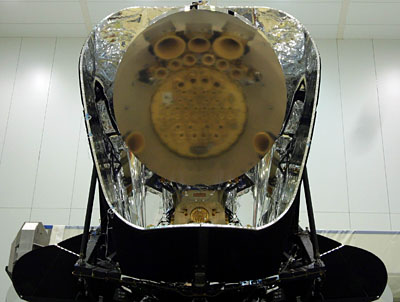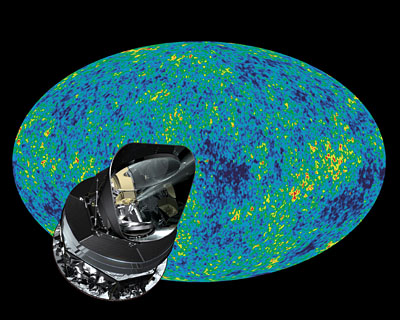The Planck satellite was launched on May 14th 2009 on a mission to measure the Cosmic Microwave Background (CMB) over the whole sky in finer detail and to a greater accuracy than has been possible before. This will allow us to measure the composition and evolution of the Universe better than ever before. The satellite comprises three main sections: the telescope, the scientific instruments, and the service module, which controls where the satellite points and communicates with scientists back on Earth. Planck is named after the German physicist Max Planck.
The Telescope

The primary job of the telescope is to focus the light onto the detectors in the instruments. This is done with two mirrors, one around 1.5m across and another 0.5m across. The mirrors are arranged in a slightly unusual way, meaning the satellite appears to be looking sideways, as shown by the light path in the image on the right. No mirror arrangement is completely perfect, so the other job of the telescope is to protect the detectors from the glare of anything else in the sky, except what it is meant to looking at. A “baffle” around the telescope means that any light from bright objects such as the Moon or Planets is not let anywhere near the detectors. Luckily, the Sun is always behind the Service Module, so it is never in the field of view.
The Instruments

Planck has two instruments, somewhat unimaginitively (though descriptively) called the “Low Frequency Instrument” (LFI), and the “High Frequency Instrument” (HFI). The instruments sit in a box just under the larger mirror, with the horns which collect the radiation poking out. HFI is in the centre, cooled to 0.1 K (-273oC), while LFI is around the outside, cooled to 20 K (-250oC). The low temperatures are to prevent the instruments from only seeing their own thermal glow. The two instruments look at slightly different wavelengths, of light. LFI looks at light with a wavelength of 10, 7 and 4 mm (corresponding to frequencies of 30, 45 and 75 GHz), while HFI looks at light with wavelengths between 3 and 0.3 mm (corresponding to frequencies between 100 and 900 GHz). These wavelengths are in the “millimetre” or “sub-millimetre” region of the spectrum.
Professor George Efstathiou of the Kavli Institute for Cosmology at the University of Cambridge, and member of the Planck Science Team, has written an article on Planck, its science goals, and the exciting atmosphere surrounding the mission. The article is available here.
